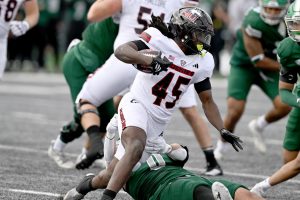Remember more than hippies
January 21, 2005
Every two weeks, Sweeps will take a look back at NIU decade by decade. This is in no way a ripoff of that VH1 series we’ve never seen and certainly never bought the DVDs of.
The 1960s at NIU were about more than hippies and experimenting with illegal substances. They were about new technology, hippies, a fight song, a steel sculpture and experimenting with illegal substances.
In 1964, NIU purchased its first mainframe computer. The IBM 1620 went on to star in “Tron” and later wed and divorced noted film actress Elizabeth Taylor.
The then state-of-the-art machine used a punched card, paper tape and keyboard to input data. It was able to store up to 60,000 digits and able to solve problems in engineering, research and management science.
“Recently, I took a calculator and figured out that if we charted the price of computing power, plus speed and storage over the past twenty years [1984-2004] the price of a full-sized automobile, had that industry improved equally, would be $1.95,” said NIU historian Glen Gildemeister.
The Northern Star first published the lyrics to the Huskie Fight Song in November 1961. The ruthlessly efficient Student Senate sprung into action and approved the song 17 months later on April 30, 1963.
Francis Stroup, an NIU Intercollegiate Athletics Hall of Famer if there ever was one, wrote the fight song using Neil Annas’ “Loyalty Song” as its basis.
William E. Studwell, author of “College Fight Songs: An Annotated Anthology,” ranked NIU’s anthem at number 23 on his all-time list.
“Personally, I think it is one of the better college fight songs, so I agree with Studwell,” said Paul Bauer, director of the School of Music.
“[Studwell] was a retired NIU professor who garnered some national attention for his expertise in Christmas carols,” Gildemeister said. “So that ranking is really meaningless since it is one person’s opinion and he spent his whole career at NIU and was an athletic enthusiast. That said, I think it is a very good fight song.”
In 1968, NIU purchased a 16 foot by 14 foot steel sculpture called the “Le Baron” that sat in front of Lowden Hall for the inauguration ceremonies of university president Rhoten H. Smith. “Le Waste of Money?” or “Le Ebay-worthy?”
Creator Alexander Calder, arguably one of the most important sculptors of the 20th century, chose the placement and design himself after considering maps of campus. The sculpture cost $50,000.
“Calder was one of the giants of the last half of the 20th century and you can find another of his [abstract sculptures] in the main lobby of the Sears Tower,” Gildemeister said. “The $50,000 sculpture, several knowledgeable art market people have told me, is now worth well over $1 million.”
Billy Nickol, a senior political science major, had a slightly different take.
“I suppose it’s cool that the $50,000 investment turned into a million dollar appraisal, but I’m just uncomfortable with giving French people money for anything,” Nickol said.






